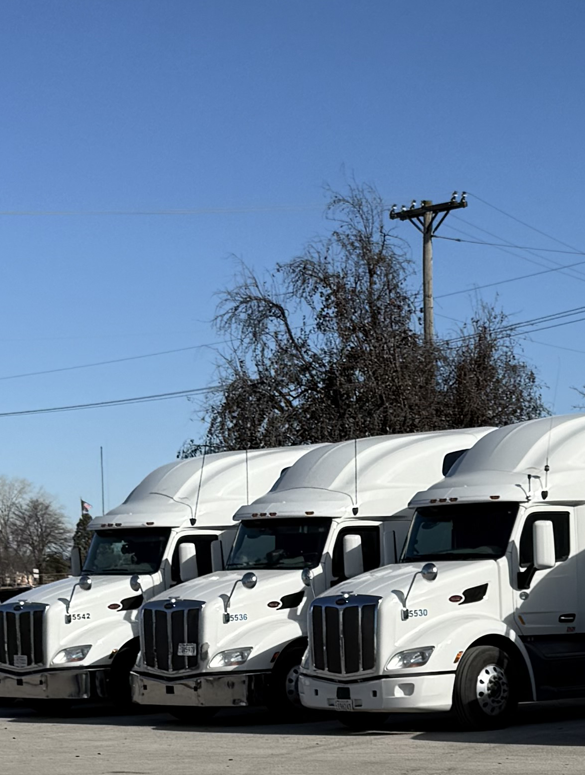Owner Operator vs Company Driver: Which Pays Better in 2024?
Owner operators operate as independent businesses (1099), while company drivers are W-2 employees. According to the ATA 2024 Benchmarking Report, U.S. owner-operators average $2.10-$3.75/mile versus company drivers at $0.55-$0.85/mile, but must cover all IFTA fuel taxes and Class 8 preventative maintenance costs.
FMCSA Definition: An owner-operator must maintain CSA score compliance and ELD mandate updates, while company drivers follow carrier-provided DOT hours-of-service protocols.
| Key Difference | Owner Operator (U.S. Specific) | Company Driver (U.S. Specific) |
|---|---|---|
| Tax Status | Schedule C filings with per diem deductions ($69/day in 2024) | Simple W-2 with standard deductions |
| Regulatory Burden | Must track IFTA quarterly filings and state-specific permits (e.g., Texas oversized load permits) | Company handles FMCSA compliance and ELD logging |
| Equipment Costs | Section 179 deductions on $150k+ rigs + diesel engine optimization expenses | No out-of-pocket for preventative maintenance checklist items |
2024 OOIDA Data: 82% of successful owner-operators specialize in hotshot trucking or hazmat loads, leveraging CDL drug testing waiver options for prescription medications (OOIDA, 2024).
Owner Operator vs Company Driver: Who Actually Keeps More Money?
While owner-operators gross $250k+, net profits depend on mastering U.S. trucking tax loopholes and fuel surcharge strategies. FMCSA 2024 data shows:
Real-World Comparison: Southeast Regional Haul
An owner-operator running Georgia-Florida reefer routes nets $142k after IFTA taxes and California CARB compliance costs, while company drivers earn $68k with benefits but no business expense write-offs.
| Cost Factor | Owner Operator | Company Driver |
|---|---|---|
| Fuel (7mpg @ $3.80/gal) | $54,300/year (IFTA credit eligible) | $0 (company-paid) |
| Insurance | $18k-$35k (hotshot insurance loopholes can reduce) | $0 |
| Maintenance | $25k (diesel particulate filter cleaning included) | $0 |
| ELD compliance | $500+/year | Company-provided |
How to Switch from Company Driver to Owner Operator in 2024?
The transition requires navigating FMCSA new entrant requirements and CDL skills test prep for specialized endorsements. Essential steps:
U.S. Owner-Operator Startup Checklist
- Secure $50k minimum capital (per ATA 2024 Startup Guide)
- Choose between lease-purchase programs or direct financing
- Obtain hazmat/tanker endorsements for premium loads
- Register for IFTA and state fuel permits
- Develop broker relationships before quitting company job
What Are the Hidden Risks of Owner Operator vs Company Driver Careers?
FMCSA data shows 35% of owner-operators fail within 24 months due to unplanned engine overhauls or spot market rate crashes.
⚠️ Critical U.S.-Specific Risks
- California AB5 Law: Misclassification penalties up to $25k
- Texas Two-Step: Double permitting for oversized loads
- Midwest ELD Violations: $2k+ fines for logbook errors
FAQs: Owner Operator vs Company Driver
How do owner operators handle CDL drug testing waiver options?
Unlike company drivers, owner-operators must:
- Maintain FMCSA-compliant testing programs ($500+/year)
- Document prescription medications with DOT medical examiners
- Use third-party administrators for random testing
What business expense write-offs do owner operators miss?
Most overlook these IRS-approved deductions:
- Truck wash expenses (up to $2,500/year)
- ELD subscription fees
- Load board memberships (DAT, Truckstop.com)
- Portion of streaming services for sleeper berth
Which states are best for owner operator tax benefits?
Top 3 for tax advantages:
- Texas: No state income tax + heavy equipment exemptions
- Florida: Low IFTA fuel tax rates
- South Dakota: Easy LLC formation for asset protection
U.S. Trucking Resources
- FMCSA Portal – New Entrant Compliance Guide
- ATA Research – 2024 Owner Operator Profitability Study
- OOIDA – Hotshot Trucking Insurance Guide
- DOT – State Permit Databases

